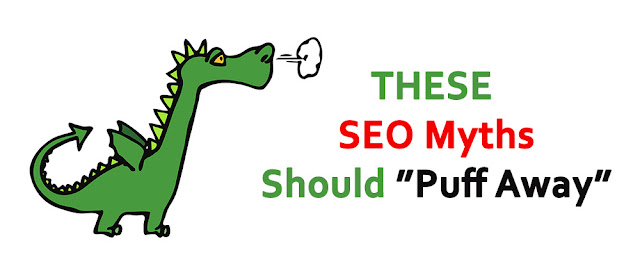Given that the SEO world stems from secret algorithms, your efforts could easily feel like guesswork.
We’re a digital marketing agency that wants to debunk a lot of the guesswork so you can confidently succeed in your SEO strategy.
Read on for five SEO myths you should pay attention to.
Myth 1: When Website Rankings Fluctuate Due to a Search Engine Algorithm Update, React Immediately by Making Website Changes
A 100 percent optimized algorithm is a moving target even for search engines. Google is constantly testing how they can improve the search experience, which can cause slight changes to your rankings if you’re part of the test group. That doesn’t warrant an executive meeting.
Have your SEO agency or team monitor how you and your competitors’ rankings fluctuate for a few weeks to understand what’s being tested. It will be more insightful to figure out how you need to react if the change is permanent. If it’s a major change, Google will eventually confirm, which you can find out by following John Mueller on Twitter or by checking out its blog at https://webmasters.googleblog.com.
Related Article: HOW TO BUILD SEO LINK BUILDING CAMPAIGN 2016-2017?
Myth 2: Link-Building Is a Black Hat Tactic
In 2011, JCPenney’s SEO agency used content farming, a black hat tactic clearly against webmaster guidelines, to get the retailer ranking for competitive keywords. After the tactic was reported to Google, JCPenney fell off the organic search grid, lost business and caught the media’s attention. The publicity turned into an SEO lesson that made companies especially those with an established reputation extremely cautious of link-building practices.
However, backlinks are still an important factor in Google’s algorithm to determine your site’s authority and should be a vital part of your SEO strategy. At iQuanti, we help our clients understand that the key to building a white-hat link building program is authenticity. These are three cases where link-building is acceptable:
- User experience: Assume your product is in a blog post on the 10 best products for your industry. Linking back to your site gets the user to their destination faster resulting in a better user experience which is always a thumbs up from the search engines.
- Content Distribution: Sponsored articles, press releases, sponsored social updates, sponsored recommendations, and a native newsletter are all white-hat SEO tactics.
- Public Relations: PR articles linking back to your site are a great signal to search engines letting them know your brand authority.
The rule of thumb is white-hat organic search techniques come from organic efforts. They should be about attracting users rather than links. That comes naturally for companies with good authority because people know and trust their brand and are, therefore, more willing to promote it and its products. That also comes with a downside: reputable companies are also at greater risk of getting bad links that can harm rankings. Our recommendation is to closely monitor from where you’re getting backlinks, using the Google Webmaster tools.
Myth 3: Keyword Optimization Is Keyword Stuffing
There’s a fine line between keyword optimization and keyword stuffing. Keyword optimization is integral in your SEO strategy because keywords communicate to search engines what your page is about. Keyword stuffing, on the other hand, is a practice of loading a webpage with keywords or numbers in an attempt to manipulate a site’s ranking (from Google).
As a user, you can easily tell the difference between the two because keyword stuffing appears unnatural and reads like a bad grammar lesson. Google has also been making things better by improving natural language recognition. But if your page does not mention your product or any synonym of it, it is just difficult for search engines to know what your page is about.
Myth 4: Only Optimize for Google
When Bing was in its infancy, SEOs only focused on Google and while it’s true that Google still holds majority market share at 64 percent, Bing’s market share has been holding steady. We recommend businesses optimize for both algorithms so they don’t miss out on the search market share.
Even though similar factors are in the Google and Bing algorithms, the factors are weighed differently resulting in contrasting search results. Bing places more emphasis on user engagement, click-through rates, social signals, keyword domains, and page authority and less emphasis on backlinks.
Myth 5: Content Is the Only King
This is pulled directly from Google’s webmaster guidelines: “Google’s goal is to provide users with the most relevant results and a great user experience."
We hear often that content is king, but it shares the throne with user experience, both on and off the site and sites need to get it all right. Users are savvier nowadays and have higher expectations for the web. They want the quickest access to high quality, relevant, well-structured content and they want it in a beautiful design that connects them to the brand.
That’s why search engines have usability factors in their algorithm like page load time, site speed, and time spent on site to determine if your site is meeting users’ needs. If your website is difficult to navigate or your content is not well-structured, users bounce off quickly. Similarly, your site needs to be recognized as an authority by other sites through links. Users are better served when they can easily navigate to your site through a relevant link.
Related Article: CHECK YOURSELF IN SEO: TOP 38 BASIC INTERVIEW QUESTION 2016
Moving ahead with SEO confidence is our goal for you. If you have any questions on these five myths or want to get our opinion on others, feel free to reach out from our website.
Original Source:


0 comments:
Post a Comment
Ho Ho Ho ! Please Do not Spam ! Happy Blogging to all